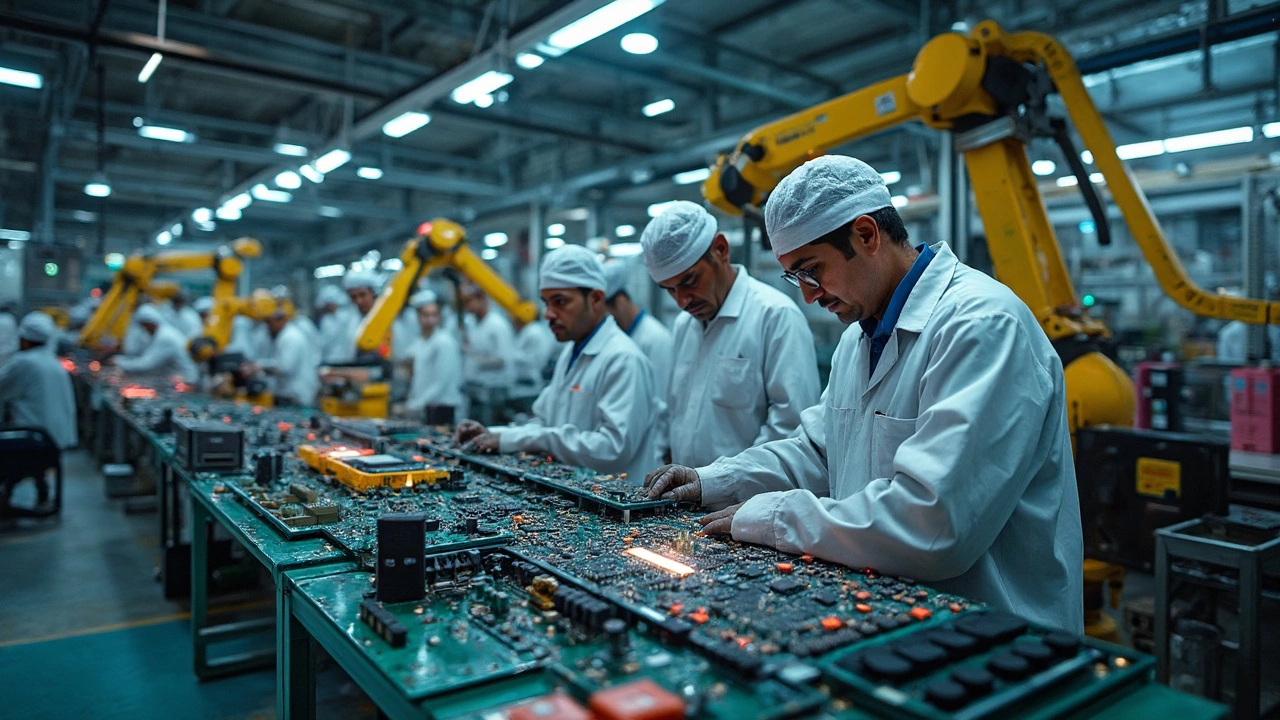Electronics Manufacturing in India: Trends, Hubs & Opportunities
When working with electronics manufacturing, the large‑scale creation of circuits, devices, and systems that power everyday gadgets. Also known as electronic production, it blends design, component sourcing, and assembly into a single workflow that fuels everything from smartphones to industrial controllers.
One of the biggest drivers behind this ecosystem is semiconductors, the silicon‑based chips that act as the brain of modern electronics. Without reliable chip fabrication, even the simplest sensor would stall. India’s push for domestic wafer plants means the supply chain is tightening, cutting lead times for local manufacturers.
Another pivotal piece is the electronics city of Bangalore, a cluster of tech parks, R&D labs, and contract manufacturers that has earned the nickname ‘Silicon Valley of India’. Companies here specialize in printed circuit board (PCB) assembly, rapid prototyping, and IoT device integration, turning ideas into market‑ready products faster than ever.
Key Processes Shaping the Industry
Electronics manufacturing requires precision at every step. First, component sourcing—whether it’s passive parts like resistors or active modules like power ICs—sets quality benchmarks. Next, PCB fabrication turns schematic designs into physical boards, a step where automation and surface‑mount technology (SMT) boost throughput. Finally, testing and validation catch defects before products ship, ensuring reliability for everything from wearables to automotive electronics.
As factories adopt Industry 4.0 tools—real‑time data analytics, robotic pick‑and‑place arms, and AI‑driven quality inspection—the margin between design and delivery shrinks. This shift not only cuts costs but also opens space for small startups to compete with established players.
Consumers are also influencing the supply chain. The surge in IoT devices pushes manufacturers to embed connectivity modules early in the design phase. That means tighter collaboration between chip designers, firmware engineers, and assembly lines, creating a feedback loop that speeds up innovation.
Looking ahead, government incentives for chip fabs, green manufacturing standards, and a growing pool of skilled engineers are set to keep the momentum strong. Whether you’re scouting a partner in Bangalore, evaluating a new semiconductor partner, or simply curious about the latest PCB trends, the landscape offers plenty of angles to explore.
Below you’ll find a curated set of articles that dig deeper into product ideas, startup costs, industry rankings, and the specific role Bangalore plays in the electronics manufacturing story. Dive in to get practical tips, data‑driven insights, and a clearer picture of where the next opportunities lie.




